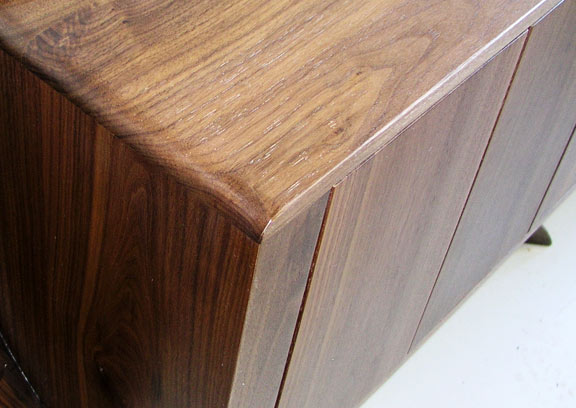Question
Virtually all of the heart pine projects I have been part of were finished with Waterlox with great success and beauty. I have a project in front of me, a large corner entertainment cabinet in which the client has asked for the option of a CV finish.
Does anyone have any experience spraying CV on antique heart pine? If yes, did you have to have the wood dried more than normal or treat it with anything before finish? My instinct says that the CV would not stick well to the sappy surface or that successive coats would pull or otherwise deform the first coat. Maybe I am just paranoid because I have always used an oil product and occasionally a wiped poly. Any real-world experience would be appreciated.
Forum Responses
(Finishing Forum)
From contributor M:
I have sprayed CV over a knotty pine kitchen and indeed the CV did pucker over the knots. I lucked out because this was an antique rustic-look farm kitchen with glaze, and the puckers added character and were not rejected. I will always remember that lesson.
This is why I usually use Waterlox. It is a build finish and the first coat, particularly if you thin it with naptha or mineral spirits, soaks deep into the wood and successive coats burn in and bond. CV, once shot, will crosslink and become almost inert, requiring scratches from light sanding (paper or synthetic) for bite on successive coats. I am afraid to commit to using this extremely sappy wood that also typically contains a variety of other materials and solutions soaked into it over the one to two hundred years the beams and floorboards this species is reclaimed from has soaked up.
I have had this wood taken from whiskey distilleries and cigar factories, smelling like each respectively. There really is no way to completely extract the sap or any other soaked in material from these boards without either subjecting them to a visit to a kiln or to cook them in a water or chemical bath, ruining the patina and character that you would normally select this wood for in the first place. I guess what I am looking for here is either someone to tell me that CV does not work on antique heart pine, either through empirical evidence or PHD level theory, or to tell me CV can be used and this is how.
Spray the first coat and see what happens. Scuff sand gently with 320, spray the second coat and see what happens. On some (not all) of the wood, spray a third coat and see what happens, and then determine if two coats, or three coats, is where you want to stop.
I am a cabinet maker but on the side I also make woodturnings out of everything from cocobolo to teak to desert ironwood to morado. All of these are quite oily, loaded with pitch, smell (especially the desert ironwood), and I've very successfully put conversion varnish (MLC Krystal) on all of them with no problems whatsoever. I do wipe them all down with lacquer thinner first. I've made fountain pens from desert ironwood that have gone several years and the finish still looks beautiful - standing up to both the ironwood's oil content, and hand crud from the guy writing with it.
